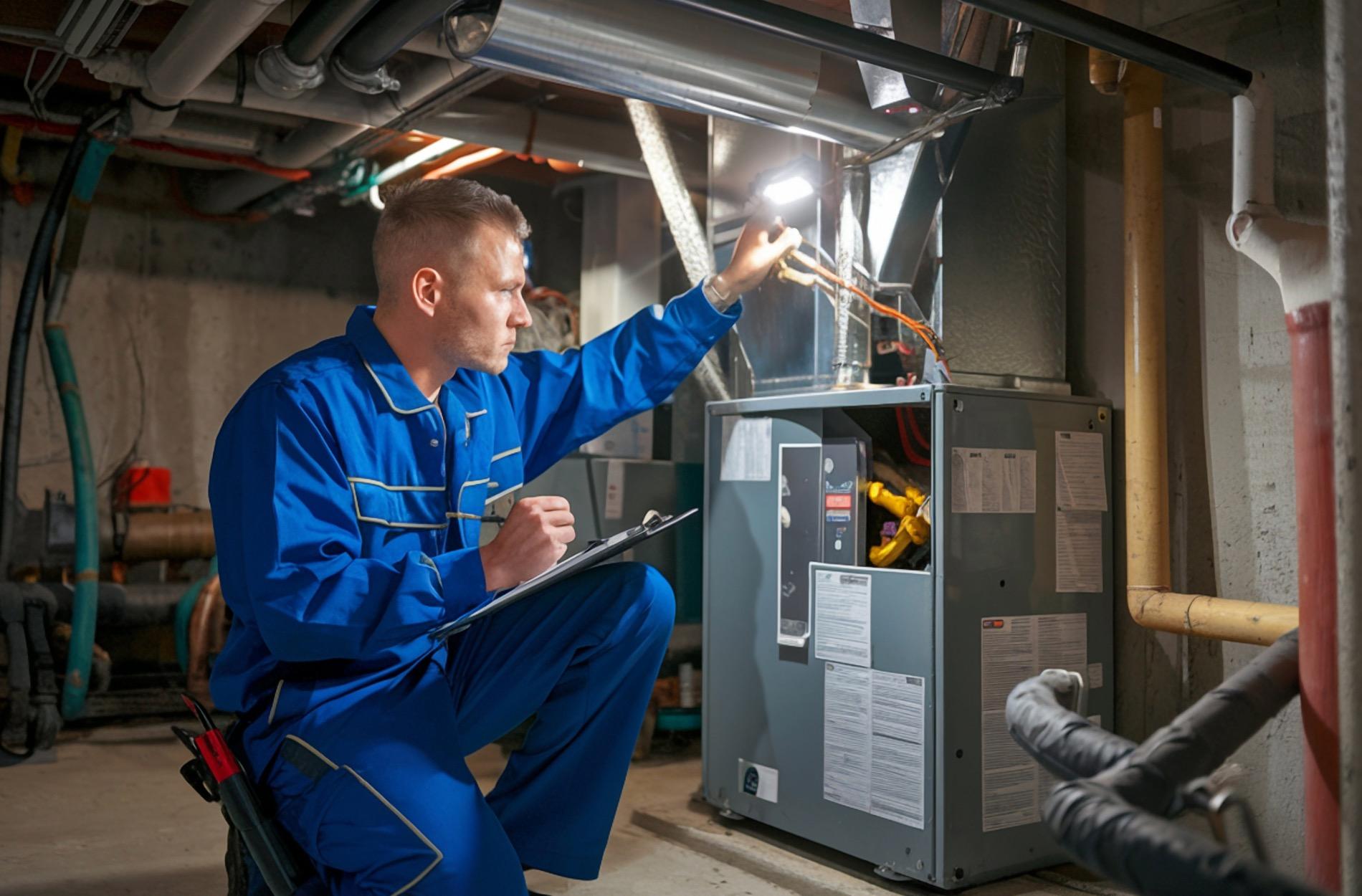
Keeping your home warm and cozy during the winter months relies heavily on your furnace working properly. There’s nothing worse than dealing with a faulty furnace right when you need it most. Spotting early signs of trouble can save you from unnecessary discomfort and expensive repair bills.
Many warning signals can indicate your furnace is struggling. These signs often start small but can escalate if ignored. By paying attention to these early hints, you can take action before minor issues turn into major problems. Listening for unusual noises, keeping an eye on heating performance, and monitoring energy bills can all reveal potential issues.
Understanding these early indicators helps you maintain your furnace and ensure its longevity. A well-functioning furnace provides consistent heat, keeps energy costs in check, and prevents worry about unexpected failures. Stay ahead of furnace problems by knowing what to watch out for and addressing any concerns promptly.
Unusual Noises Coming from Your Furnace
Hearing strange noises coming from your furnace can be one of the earliest signs that something is amiss. Different sounds can point to different issues, so it’s important to pay attention to what you hear. Common noises include banging, whistling, and rattling. Each of these sounds might signify a potential internal problem worth addressing.
A banging noise often indicates an issue with the ignition system. When there is a delay in ignition, gas can build up and cause a small explosion when it does ignite. This is not only noisy but also potentially dangerous if left unchecked. Whistling sounds usually mean there’s an airflow restriction, often caused by a clogged filter or blocked ducts. This affects the efficiency of the furnace and could lead to overheating if airflow isn’t restored.
Rattling noises can be trickier to pinpoint. Loose screws or parts getting unfastened due to vibrations often cause this noise. While sometimes this problem only requires minimal tightening, ignoring it might lead to more severe internal damage. By being alert to these noises, you can prevent minor issues from leading to costly repairs and ensure that your furnace keeps running smoothly.
Inconsistent Heating in Your Home
Inconsistent heating throughout your home is another signal that your furnace might be experiencing trouble. If some rooms are colder than others or temperatures fluctuate significantly, it’s time to investigate further. Even heating is important for maintaining comfort, and uneven distribution often points to underlying issues.
Several factors can cause inconsistent heating. Airflow problems are common culprits. If the furnace’s blower isn’t working properly, warm air might not reach certain parts of your home. Blocked ducts due to debris or incorrect damper settings can also result in cold spots. Checking for these issues can help restore even heating.
Thermostat malfunctions can also cause inconsistent heating. If the thermostat is faulty, it may not accurately read the temperature, which leads to frequent cycling on and off of the furnace. This results in fluctuating temperatures and inefficient heating. Regularly checking the thermostat settings and replacing batteries can alleviate this issue.
Additionally, poor insulation may contribute to uneven heating. If parts of your home don’t retain heat well, your furnace may struggle to maintain a consistent temperature. Addressing insulation problems can enhance overall climate control and reduce furnace strain. Overall, being aware of these potential causes allows you to take corrective actions sooner, keeping your home uniformly warm.
Increase in Energy Bills
An unexpected rise in your energy bills is a clue that your furnace might be running inefficiently. When a furnace struggles to heat a home, it uses more energy to try to maintain the set temperature. This increase in energy consumption directly translates into higher utility bills. Being aware of these spikes can help you identify underlying issues.
Several reasons could be behind this inefficiency. Faulty components, such as a dirty air filter or worn-out parts, force the system to work harder to distribute heat. Regularly checking and replacing filters leads to smoother operation and lower energy use. Additionally, problems with the blower motor could affect how well the unit circulates warm air, causing it to run longer than necessary.
Another factor could be outdated equipment. Older furnaces often become less efficient over time, even with maintenance. Upgrading to a more modern, energy-efficient model might be necessary if you notice consistent increases in energy costs. Scheduling regular professional inspections helps catch inefficiencies early and keep bills manageable.
Highlighting potential reasons and addressing them promptly can prevent your monthly expenses from getting out of hand. By being proactive, you ensure your furnace operates optimally, which keeps your wallet happy and your home warm.
Warning Signs of Carbon Monoxide Leaks
Carbon monoxide (CO) is a dangerous gas produced during the combustion process in furnaces. Since it’s colorless and odorless, detecting leaks requires vigilance. Understanding the warning signs of carbon monoxide presence is essential to keep your family safe.
Symptoms of carbon monoxide exposure include headaches, dizziness, nausea, and shortness of breath. These symptoms often mimic flu, but if they occur inside your home and ease when you leave, it’s crucial to consider other possibilities. Prolonged exposure can be fatal, so never ignore these signs.
Installing CO detectors throughout your home provides the best protection. Place them near sleeping areas and furnace rooms. Detectors alert you to dangerous levels of carbon monoxide, allowing for timely evacuation and professional intervention. Regularly test these devices and replace batteries to ensure they function correctly.
If you suspect a carbon monoxide issue, open windows immediately and evacuate your home. Contact emergency personnel and professional HVAC experts to inspect and address the source of the leak. Paying attention to these warning signs and taking precautions ensures peace of mind and safety for your loved ones.
Conclusion
Keeping your furnace running smoothly is crucial for maintaining a cozy home environment and avoiding unnecessary stress. By spotting early trouble signs such as unusual noises, inconsistent heating, rising energy bills, and potential carbon monoxide leaks, you can address issues before they turn into costly repairs or safety hazards. These proactive steps are important for ensuring your furnace operates effectively and efficiently.
Taking the time to understand these warning signs empowers you to act quickly and decisively. This vigilance translates into a more reliable heating system and a healthier, more comfortable home. Regular maintenance and attention to detail help you manage any concerns as they arise, prolonging the lifespan of your furnace and reducing unexpected costs.
Don’t wait for small issues to turn big. Trust the professionals at Total Air Masters to handle all your heating needs with expertise and care. Our team is ready to help you keep your furnace in peak condition. Contact us today to schedule an inspection or furnace repair in Cypress and ensure your home remains warm and safe throughout the year.
